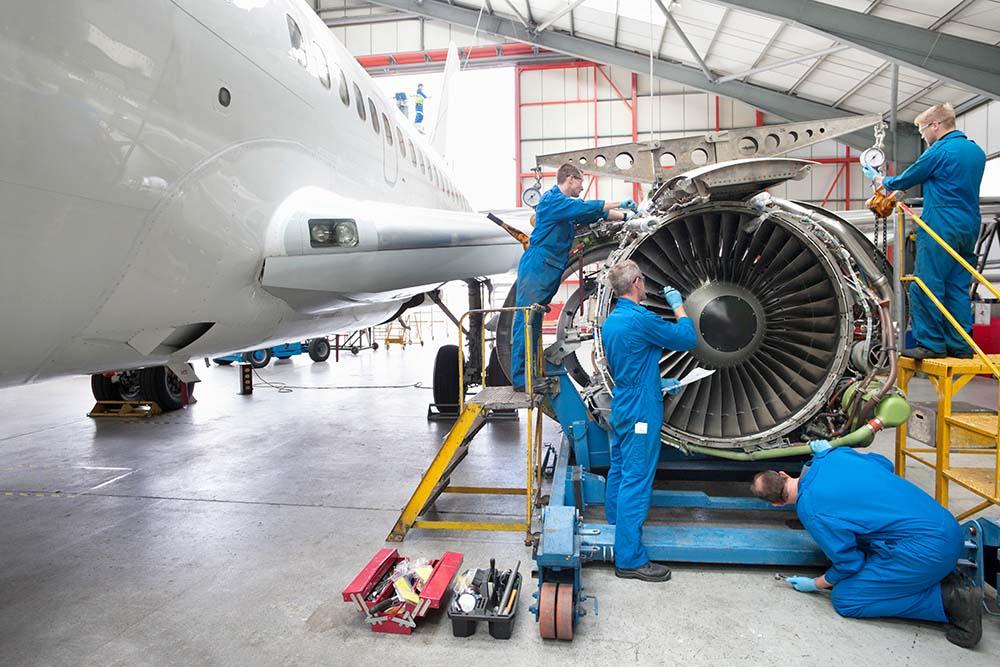
Supply chain shortages, geopolitical instability and inflation are all keeping MRO managers awake at night, but amidst this bevy of issues is one challenge the industry knew was coming long before the COVID-19 pandemic threw everything off-balance: MRO’s major workforce shortage.
At Aviation Week’s recent MRO Europe conference in London, the labor shortage came up time and again amongst panelists from across the aftermarket. During an audience poll about which key factors were impacting MRO businesses today, 39% of the audience chose the labor shortage—and panelists agreed.
“For me, the biggest issue is labor,” stresses Brian Sartain, senior vice president of repair and engineering services at AAR. “We were working on labor in the U.S. perhaps even harder pre-COVID, because we had a significant early retirement of our workforce and a significant deficit.”
AAR and other MROs reported that demand for maintenance work is booming, but the labor shortage is restricting how much work can be done, which in turn is forcing the need to raise prices.
Zilvinas Lapinskas, CEO of Lithuania-based MRO FL Technics, agrees the labor shortage is one of its biggest challenges, noting that young people left aviation during the pandemic for more lucrative industries. “We have to become more attractive for the young generation to start to work in our [segment],” he says, adding that the increased wages to lure these workers to MRO will cause costs to go up.
“Throwing money at the problem will solve the problem, but then you have to pass that problem on to somebody else,” notes Kata Cserep, global managing director of aviation, travel and tourism for consultancy ICF. “It comes full circle, because if I increase my prices and then pass that on to [the airlines], they then have to pass it on to the passengers, who don’t want to spend an extra 10 euros on that ticket.”
Robert Murphy, head of training for maintenance and engineering at Aer Lingus, says “the elephant in the room” is the cost of being able to compete with salaries in other sectors such as pharmaceutical, “because they’re always so much higher than what we can actually gain from ticket sales or whatever it happens that our income model is. It’s a real challenge.”
Murphy argues the problem is being exacerbated by inflation on cost of living, particularly in Europe. “If you’re a [technician] who … is faced with the option of getting a mortgage on an aircraft engineer’s pay or going to one of the pharmaceutical companies and maybe getting the extra few bits and pieces that will actually put you over the line in terms of even simple things like health insurance and all those other things that they offer as a matter of course, those industries are hard to compete with,” he says.
One option some companies have looked to is luring talent from abroad. Lapinskas says FL Technics has “more than enough technicians” at its facility in Indonesia, but trying to fill positions in Europe is a much bigger problem and it is being forced to look for labor in countries such as India and Pakistan. Until AAR can entirely fill its workforce pipeline locally, Sartain says it is “looking everywhere we can,” but that “immigration is a tough nut to crack,” politically and otherwise.
“We’re seeing a significant amount of our workforce come from South America and Mexico right now where we can secure visas for folks to be able to make that change or come to the U.S. or Canada. We have a couple Canadian facilities that have been successful in some workforce migration,” says Sartain. “That has historically been important and I think that will be more important going forward, but it all has to do with whether you can find an immigration pathway for a workforce that wants to come solve what, hopefully, is our three-to-five year problem in our country.”
Krzystof Krolak, vice president of technical operations at LOT Polish Airlines, stresses that finding qualified talent is expensive—and much easier said than done. “There is a huge gap with what universities are doing and what businesses need,” he says. “My issue, working for an airline, is finding people with not only an engineering background, but also aviation skills. It’s a huge problem. Today, when you go to universities, either you find a mechanic—B1 or B2—or you find a design engineer. There is nothing in between.”
Krolak adds that universities are also falling behind in preparing future MRO professionals for the digital innovations they will deal with in the hangar. “For me, it’s very important to work with the universities in Poland and actually tell them what I need, what is out there today and where we’ll be in 15-20 years,” he says.
Aside from improving MRO curriculum, Murphy says the industry also needs to do more to improve its academic prestige. He echoes the oft-repeated point that MROs need to find a way to market technical careers to younger generations who may view hands-on work as menial and unglamorous.
“In Germany and the Nordic countries there is no parity of esteem issue, but in Ireland, as a mechanic, you’re not seen as the same as a college graduate,” he says. However, Murphy says this perception should not be the case, since Category B1 and B2 licensed engineers in Europe need to achieve 75% on an exam to pass, compared to other academic disciplines where passing criteria are significantly lower. Therefore, Murphy argues a maintenance certification should be considered equivalent to a bachelor’s or master’s degree when a student reaches certain levels. “I think there’s a challenge for the industry to work with the universities to actually bridge that gap,” he says.





